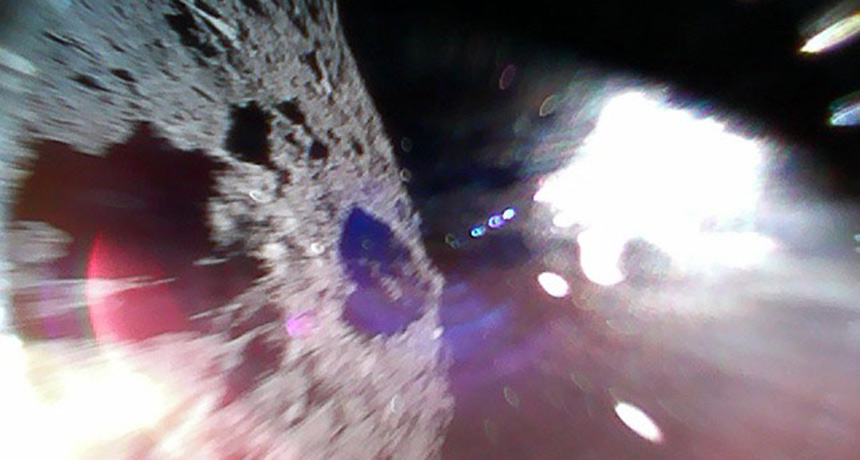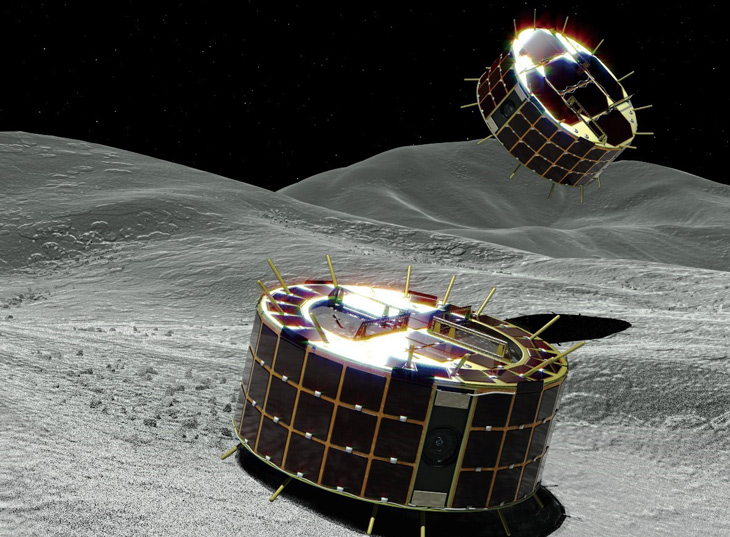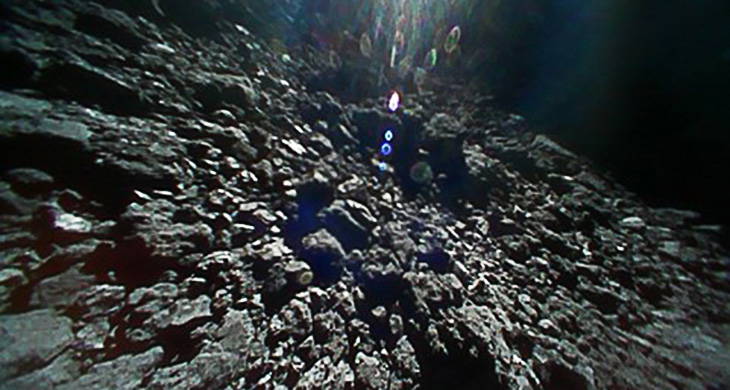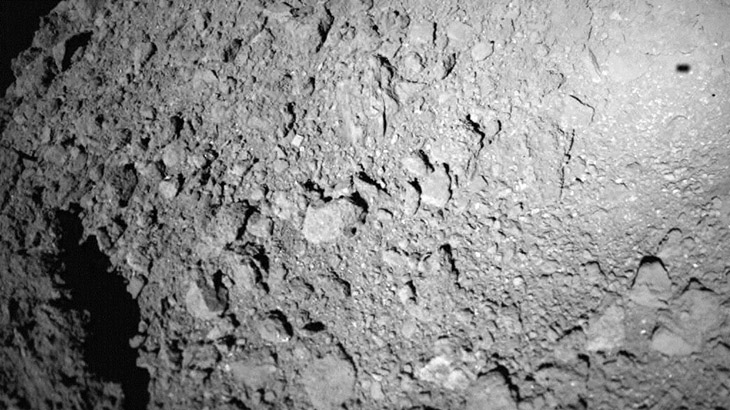The first rovers to explore an asteroid just sent photos home
The ‘Wish-you-were-here’ pictures show Ryugu’s surface

GREETINGS FROM RYUGU One of the MINERVA-II1 rovers snapped this picture while hopping across the surface of asteroid Ryugu on September 21. The gray material is the asteroid, and the bright spot is sunlight.
JAXA
- More than 2 years ago
Editor’s note: This story has been periodically updated to reflect the rovers’ progress on Ryugu.
The first rovers to explore the surface of an asteroid have landed. After touching down September 21, the vehicles took pictures of asteroid Ryugu and at least one hopped around.
Japan’s Hayabusa2 spacecraft, which arrived at the near-Earth asteroid on June 27 after a journey of more than three years, released the MINERVA-II1 container from a height of about 60 meters (SN Online: 6/27/18). The container then released two 18-centimeter-wide, cylindrical rovers. Because Ryugu’s gravity is so weak, the rovers can hop using rotating motors that generate a torque and send them airborne for about 15 minutes.
Japan’s Aerospace Exploration Agency released the first blurry, otherworldly pictures from the rovers on September 22. One image appears to have been taken midhop.
Japan sent its first MINERVA rover with the original Hayabusa mission, which reached asteroid Itokawa in 2005, but that rover missed the asteroid and was lost in space. “I was so moved to see these small rovers successfully explore an asteroid surface because we could not achieve this at the time of Hayabusa 13 years ago,” wrote Hayabusa2’s project mission manager, Makoto Yoshikawa, on the mission’s webpage.

A German and French rover, also aboard Hayabusa2, is set to deploy to Ryugu on October 4. MASCOT will join the MINERVA-II1 rovers in measuring the asteroid’s composition, temperature and magnetic properties. A third MINERVA-II rover is scheduled to land sometime in 2019.
Later in October, the Hayabusa2 spacecraft is scheduled to touch down at a spot near the asteroid’s equator to gather a sample of dust, before returning to orbit. Depending on how that sample collection goes, the craft may try to collect two more samples from different parts of the asteroid. If successful, the spacecraft will send the asteroid dust back to Earth, to arrive in 2020.
Update: On September 27, Japan’s Aerospace Exploration Agency released some additional images snapped by the two rovers on the surface of Ryugu. The agency also confirmed that the second MINERVA-II1 rover, Rover-1B, hopped across the surface of Ryugu on September 22 (September 23 Japan Standard Time). The robot even snapped some quick images before and after the hop.

Rover-1B also managed to film a short video of the surface of Ryugu. “Enjoy ‘standing’ on the surface of this asteroid!” the Hayabusa2 team tweeted.
AS THE WORLD TURNS Rover-1B shot a 15-frame movie on asteroid Ryugu’s surface. This movie covers a little over an hour, 9:34 a.m. to 10:48 a.m.EDT, on September 22. |
To see more images captured from the surface of the asteroid, check out this thread of tweets from the Hayabusa2 crew.
Update: On October 3, the third rover, MASCOT, successfully landed on Ryugu and sent back its own snapshot of the asteroid’s surface. MASCOT is expected to take measurements at two different sites, operating for 16 hours until its battery runs out.








